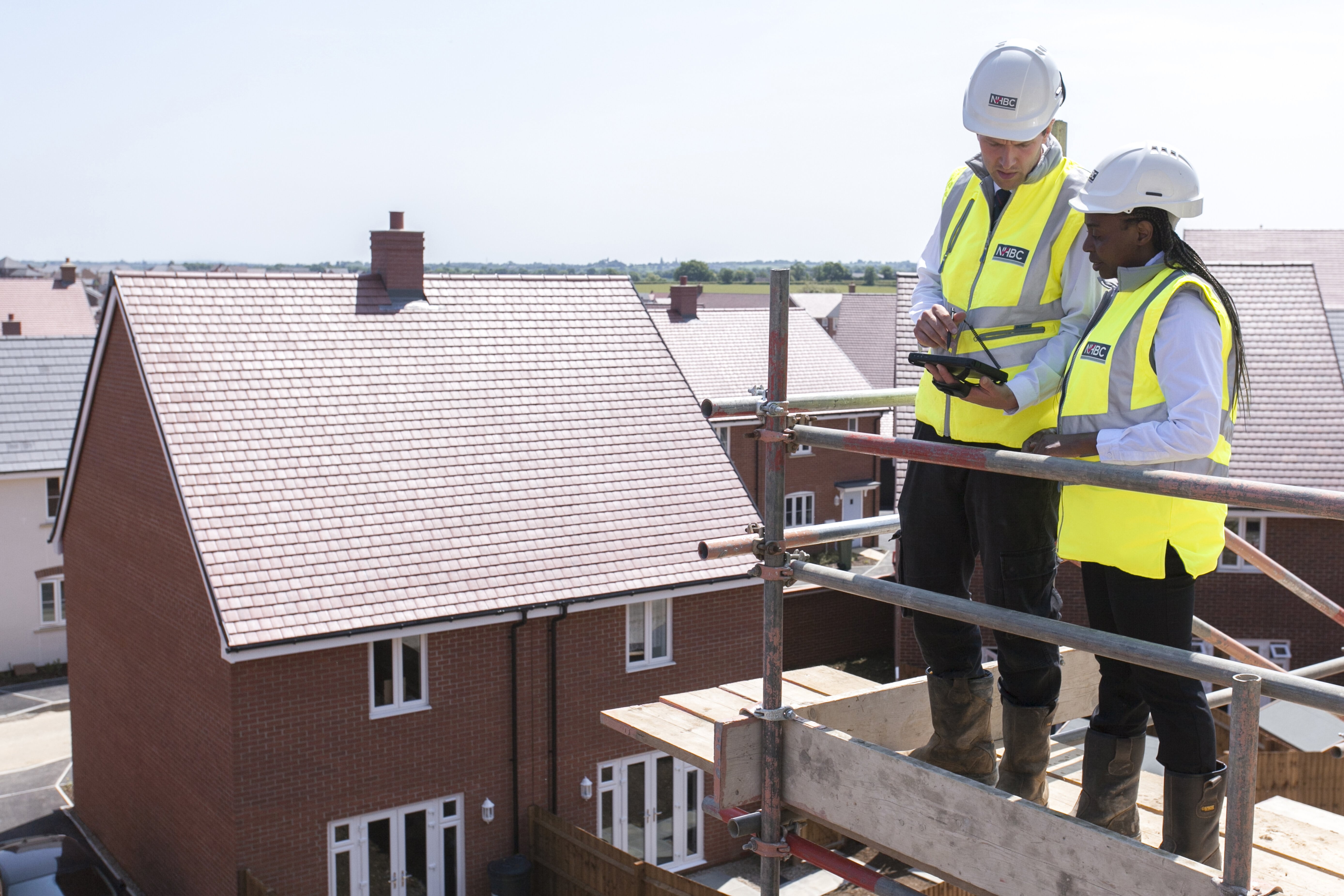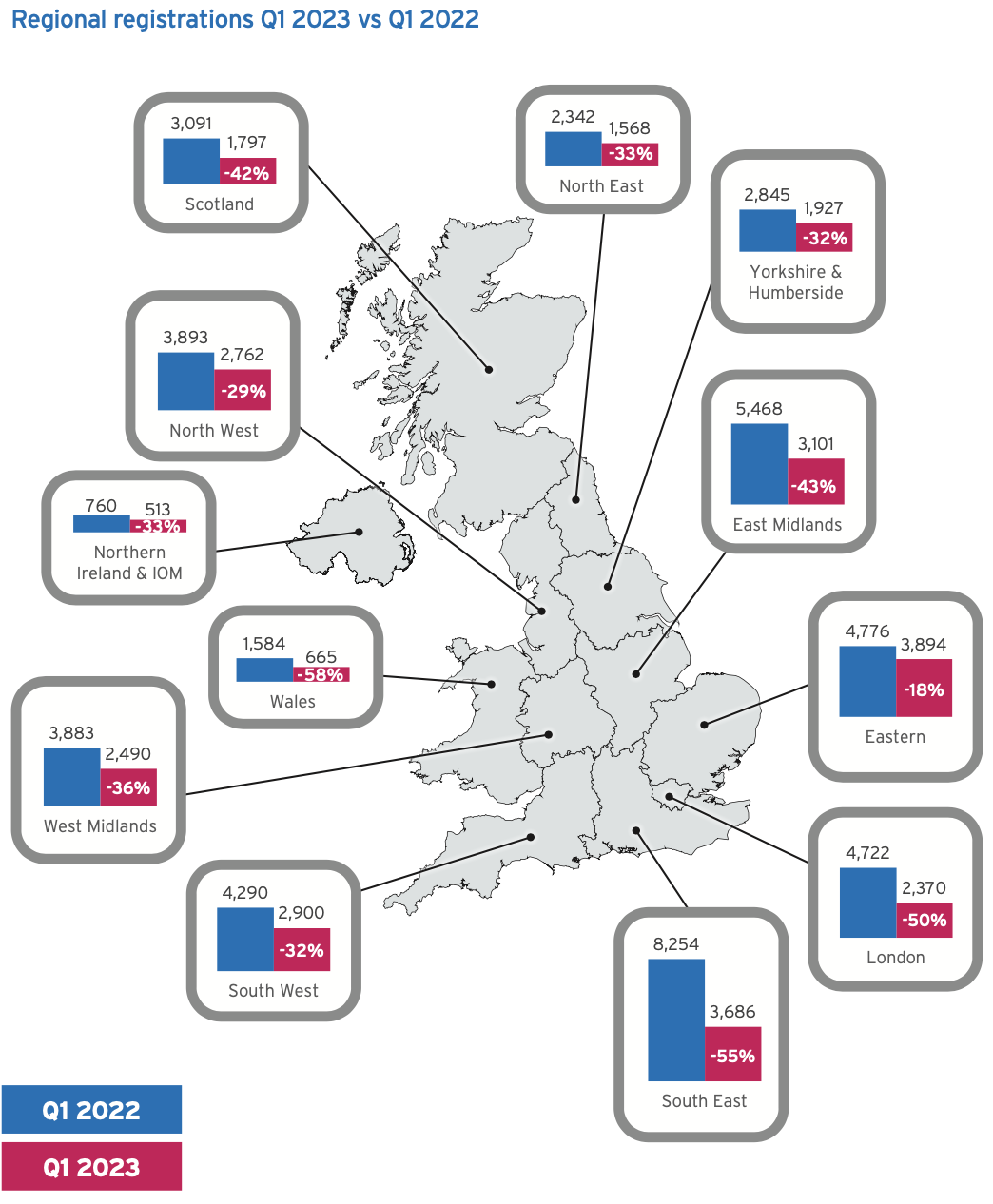NHBC: Quarterly home registrations fall by 42%

New home registrations in Scotland in the first quarter of 2023 have fallen by 42% compared to the same period last year, new data released by the National House Building Council (NHBC) has revealed.
A total of 1,797 new homes were registered to be built over the first three months of the year, down from 3,091 during the first quarter of 2022.
The picture is similar across the UK as a whole where 27,673 new homes were registered to be built in Q1 2023, 40% down on the same period last year. The decline in new home completions was less steep, just 7% down on Q1 2022.
The figures relate to new homes registered with NHBC for its 10-year warranty, which represents approximately 75% of all new homes built in the UK.
NHBC said the quarterly fall masks a return to confidence in the sector, as builders focus on finishing projects already in the pipeline.
Sticking with the UK-wide figures, the most significant falls occurred in the private sector where there was a 49% fall in new home registrations in Q1 2023 compared to Q1 2022. The rental and affordable sector performed better seeing just an 11% drop in the same period. There is evidence that some developments, initially earmarked for private sale have been block sold to housing associations and other providers indicating a shift towards affordability.
Following a 7% rise in new home registrations over the last 12 months, the highest annual volume since 2008, there are some early signs of a potential return of confidence in Q1, with 11,928 new home registrations in March compared to 8,005 in January and 7,740 in February.

Commenting on the latest data, NHBC CEO Steve Wood said: “Despite a slow start to the year, the new homes market is holding up well, with a 7% rise in new home registrations over the last 12 months. Emerging from the economic shocks of 2022 and getting to grips with a demanding regulatory environment, the data indicates house builders are taking stock, planning their output carefully and matching it to expected demand.
“While output may have slowed, building at a more controlled rate helps drive quality, which ultimately leads to better outcomes for the consumer.
“Buying a home is the biggest financial commitment many of us will ever make, so it is no surprise that prospective buyers are waiting to see if interest rates will fall in the coming months before making purchase decisions.”
The data also reveals that the number of detached houses being built has halved in Q1 2023 compared to Q1 2022 (8,041 in Q1 2023 vs 16,089 in Q1 2022), with terraced homes and apartments representing a larger part of the market than the same period last year.
Mr Wood said this suggests that some builders are focusing on the affordable end of the market. He added: “Emerging from the pandemic we saw record numbers of registrations for detached homes but now with pressures on family finances it is no surprise that the present focus has shifted towards affordable homes in both the private and rental sectors.”
Wales saw a 58% fall in registrations, while in London and the South East volumes declined by 50% and 55% respectively, compared to the same period in 2022.
Mr Wood concluded: “Despite very real supply side pressures and some stalling of consumer demand, the fundamental health of the market remains. There is a growing sense of confidence that more normal conditions are starting to return as the year develops.”







